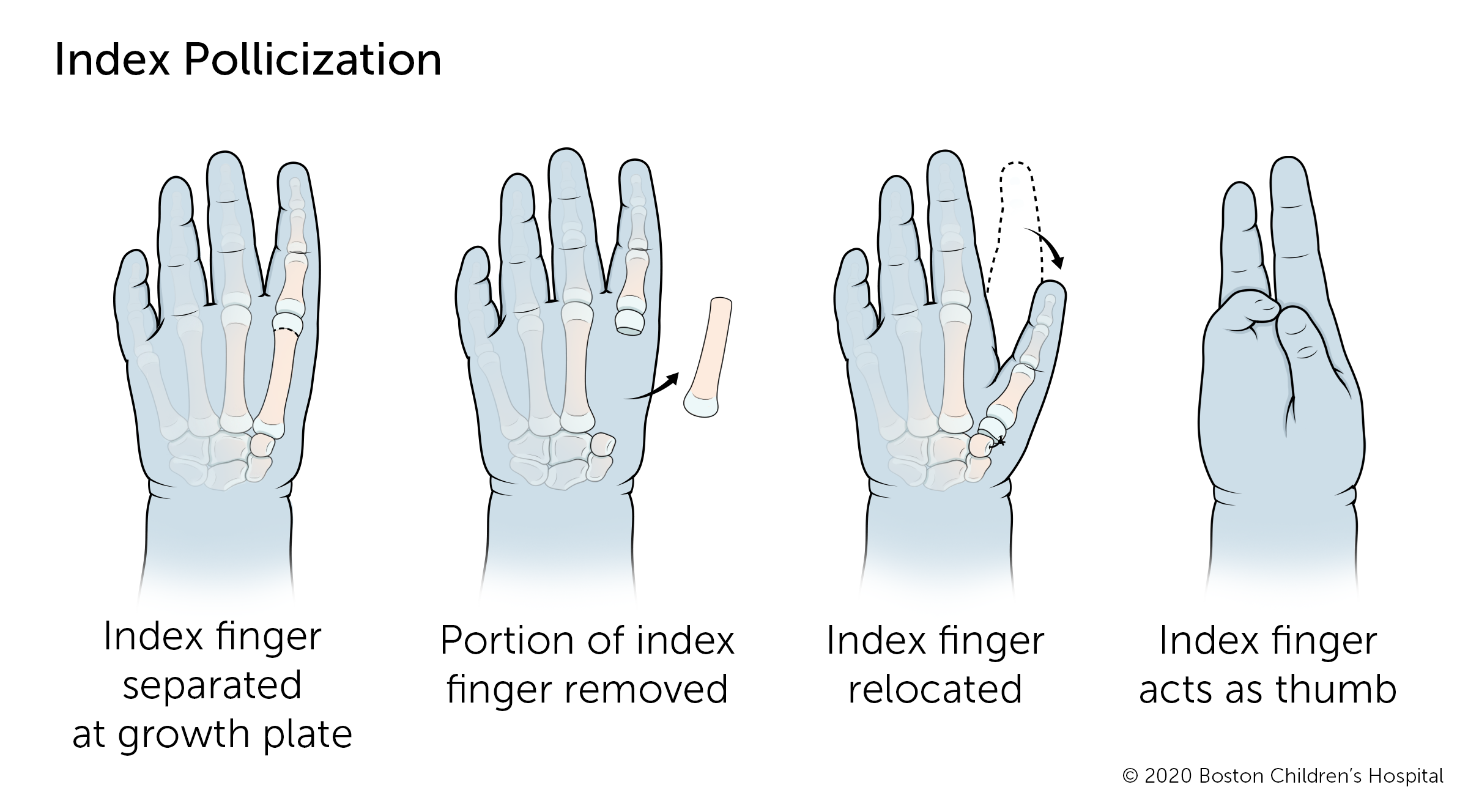What is pollicization surgery?
Pollicization surgery is performed when your child has no thumb or when the thumb hypoplasia is more severe. The operation involves creating a functional thumb by transferring another finger (usually the index) to the thumb position.

This may seem drastic because an index finger is being sacrificed. However, since thumb function is crucial to overall hand function, having a three-fingered hand with a thumb will enable your child to have considerably better hand function than a four-fingered hand with no thumb.
Surgeons and parents sometimes find that a hand with one thumb and three fingers can actually be quite acceptable in appearance. This operation has an excellent track record and its results are reliable. In cases where the index finger is normal and functional, a very good thumb results.
The decision to undergo this procedure depends heavily on the condition of your child's index finger. If the index finger cannot move independently or has other problems, your child's doctor may not recommend pollicization.
Pollicization | Programs & Services
Programs
Hand and Orthopedic Upper Extremity Program
Program
The Hand and Orthopedic Upper Extremity Program serves children with a wide range of hand, arm, and shoulder injuries.
Learn more about Hand and Orthopedic Upper Extremity Program
Centers
Orthopedic Center
Center
Established in 1903, we are one of the world’s most experienced pediatric orthopedic centers. Learn more.

